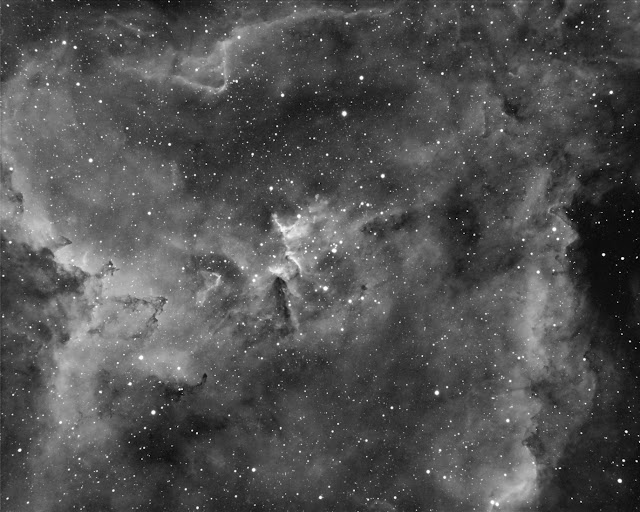 |
| LDN 1622 |
Type: Dark nebula
Constellation: Orion
Distance: 500 light years
Date: 28th January 2020
Equipment: ATIK 460EX with EFW2, Skywatcher f5.5 Esprit 100 ED refractor, Avalon Linear mount, guiding with Lodestar X2/PHD
Subframes: 23 x 600s H-alpha, 6 x 300s each for RGB (2x2 binned), no flats/darks (hot pixel removal in Astroart). |
| Stellarium map showing location of LDN 1622 |
Lynds’ Dark Nebula (LDN 1622) is a dark molecular cloud approximately
10 light-years across on the eastern edge of the constellation of Orion close
to a dim arc of nebulosity known as Barnard’s Loop, near the plane of our Milky
Way Galaxy.
It has the popular (though not with me!) nickname of the Bogeyman nebula, presumably because of the shape of the lower part of the dark cloud, which resembles a hooded figure.
LDN 1622 is highlighted against the faint and more distant background
of nebulosity, which is obscured by the dust of the dark nebula in front of it.
 |
| Parsamian 3, from main image. |
Pre-main-sequence (PMS) stars are young stellar objects that have not yet begun to burn their hydrogen core, but instead are fuelled by gravitational contraction and deuterium fusion.
As it contracts, its internal temperature rises and the resultant radiation blows away much of its birthing cocoon material of dust and gases gathered earlier in their life as a proto-star. Once this envelope has been blown away, the star becomes optically visible. The gravitation contraction continues until it begins fusing hydrogen and joins the main sequence of conventional stars.
All of the subframes in this image were plagued by noise, possibly due to high cloud. The Ha data was used as a luminance layer over the RGB combined data and had to be hit hard with noise reduction (edge preserving smooth in PSP), hence the soft look to the final image.






